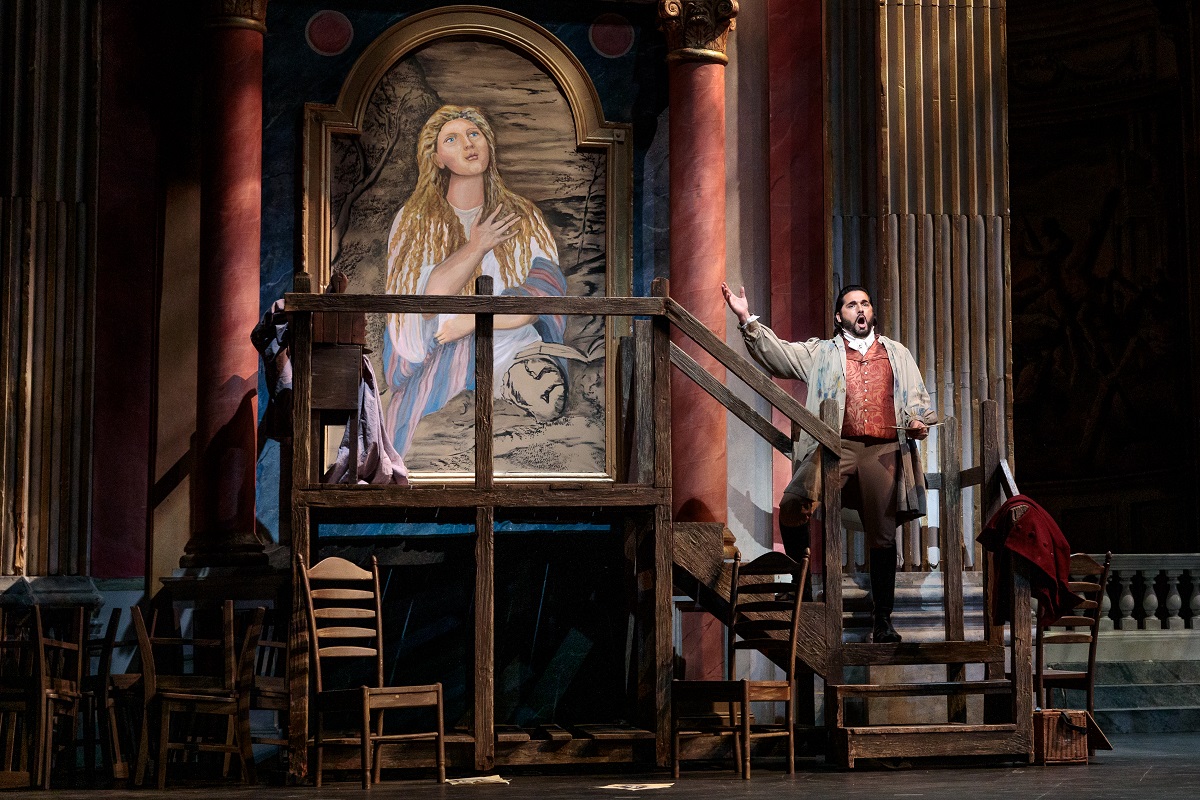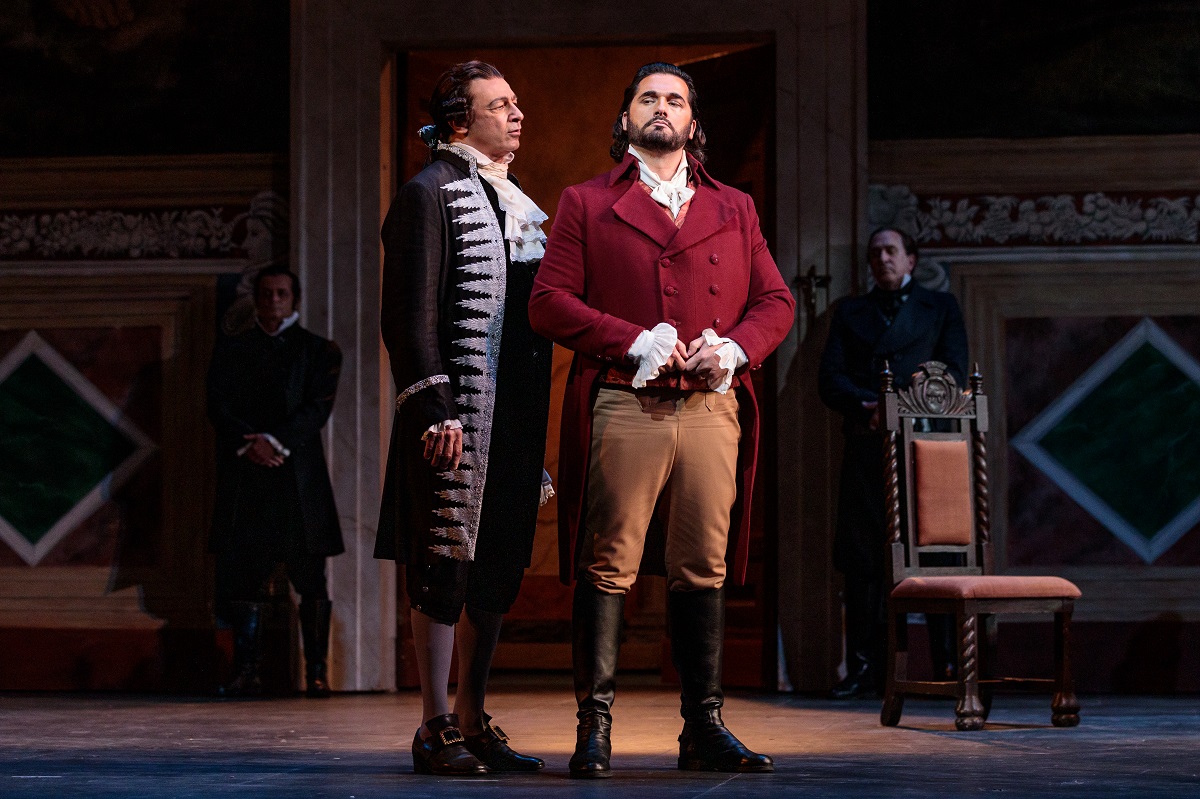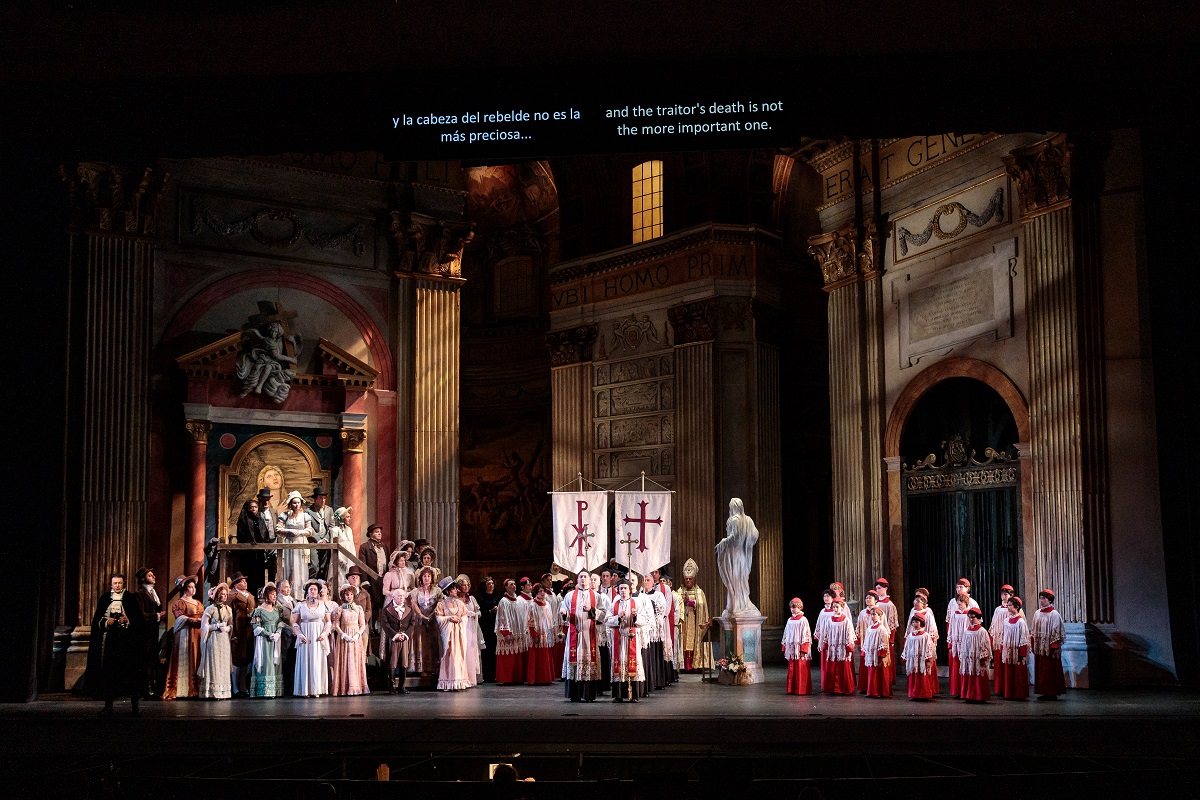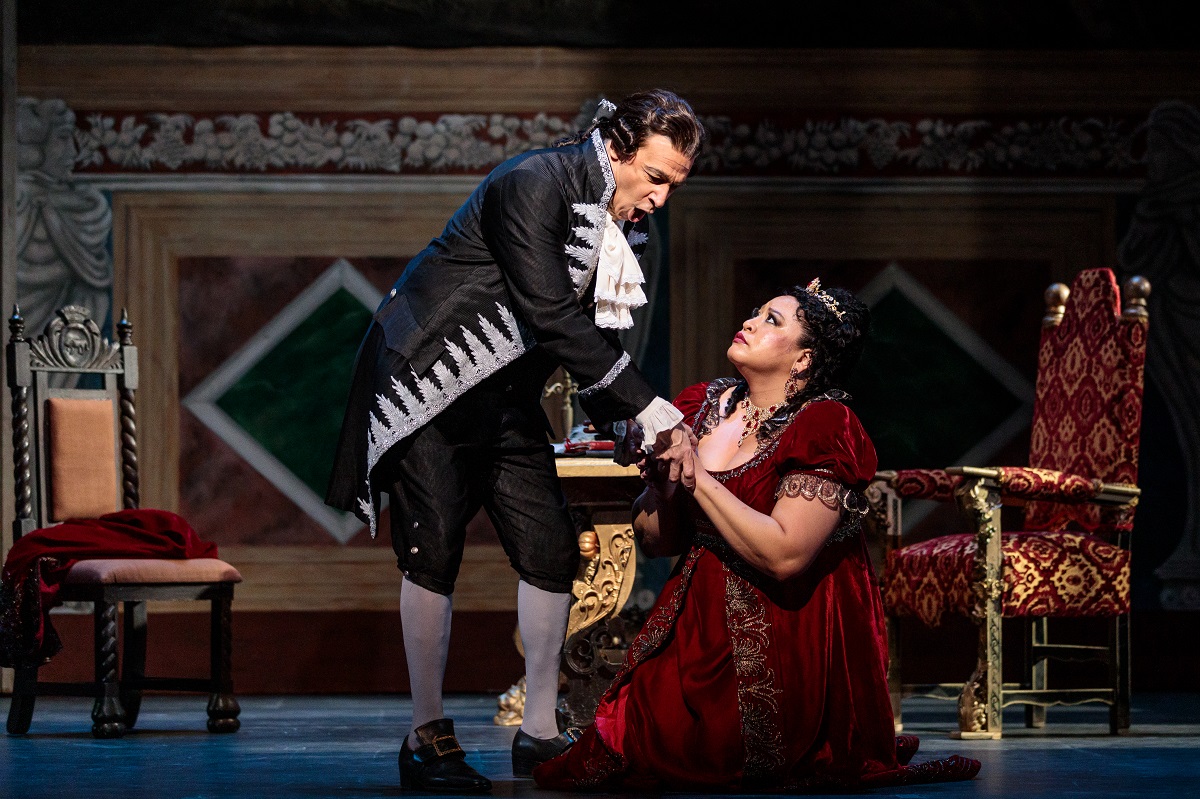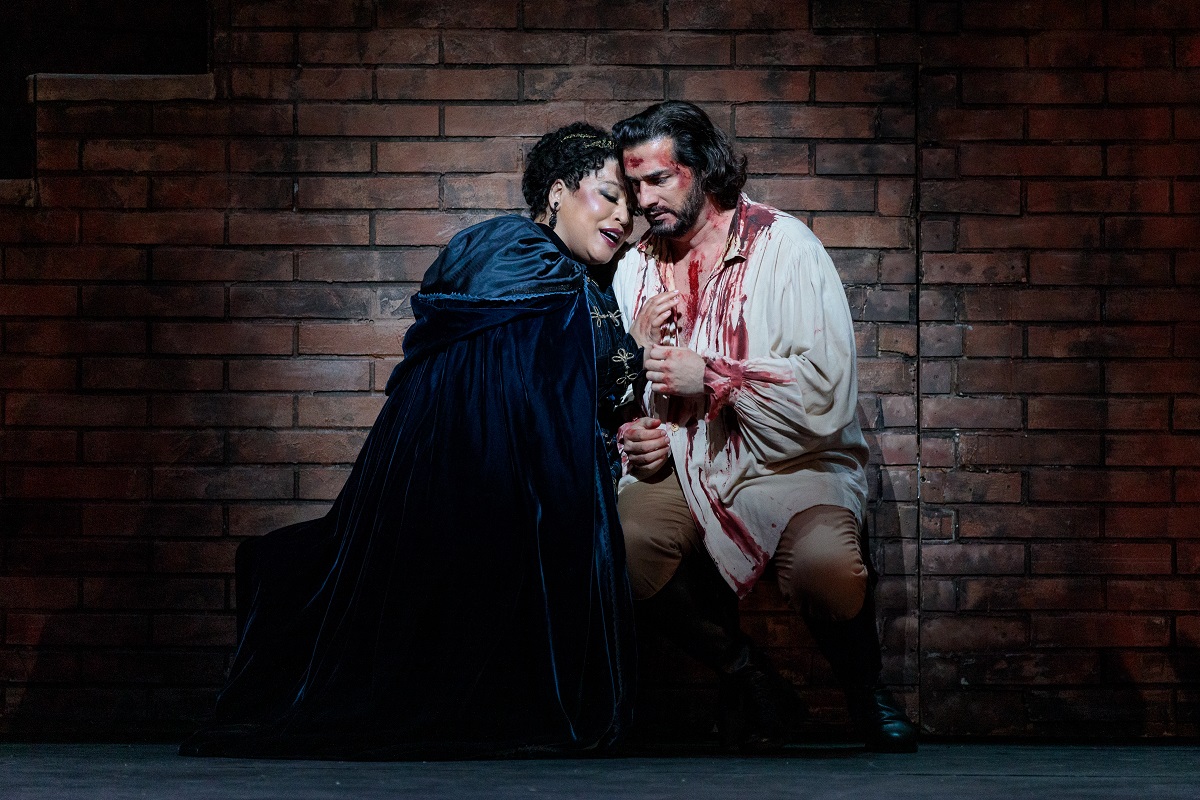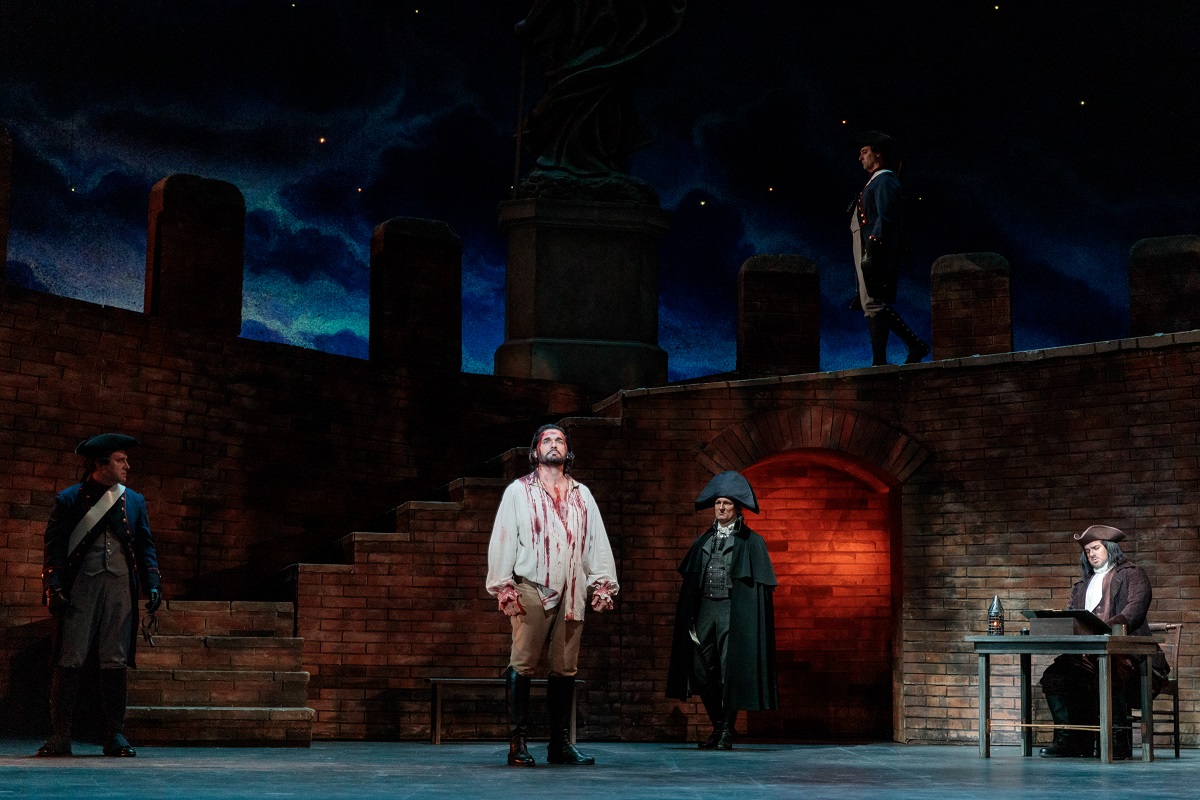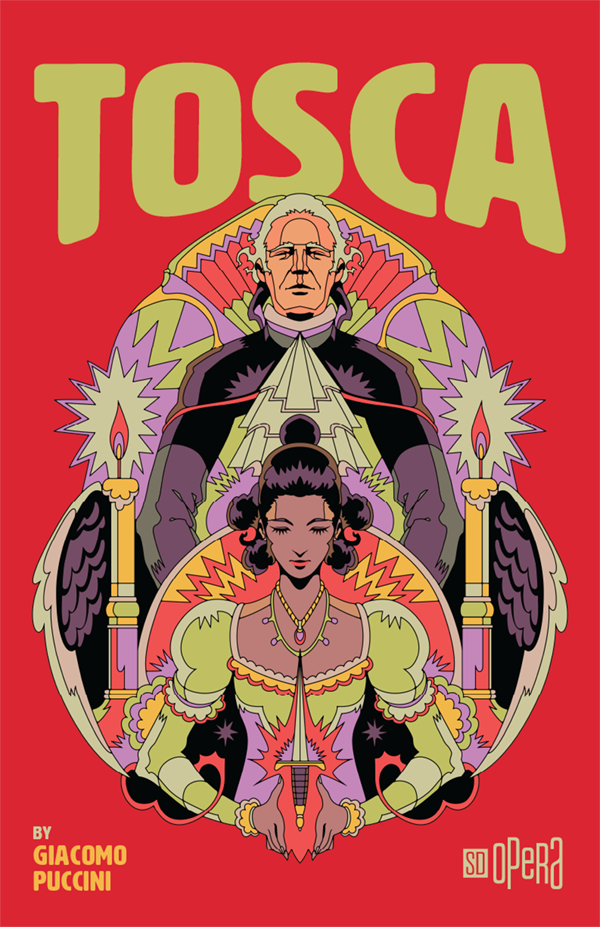
Tosca

Darlene Marcos Shiley
Lead Production Sponsor
By Giacomo Puccini
San Diego Civic Theatre
1100 Third Avenue
San Diego, CA 92101
Tosca is Giacomo Puccini’s gripping drama filled with torture, treachery, lust, execution and suicide.
Scarpia, the chief of police, wants only two things: to recapture the escaped prisoner Angelotti and to seduce Tosca, an opera singer of incredible voice and beauty. Tosca is in love with Cavaradossi, an artist and sympathizer of Angelotti. After arresting Cavaradossi for harboring Angelotti, Scarpia plays with Tosca’s emotions, promising to free Cavaradossi if Tosca will succumb to Scarpia’s desires. But Tosca has a plan of her own, all of which unfolds with tragic consequences from which no one can escape. Soaring and sensuous, filled with such beautiful arias as Tosca’s “Vissi d’arte”, Cavaradossi’s “Recondita armonia” and the powerful choral piece “Te Deum”, Tosca has some of opera’s most beloved music, and one of opera’s most gripping plots.
Tosca welcomes the return of soprano Michelle Bradley in the title role, and Greer Grimsley in his signature role of Scarpia. Argentinian tenor Marcelo Puente makes his San Diego Opera debut as Cavaradossi. Directed by Alan Hicks and with the San Diego Symphony conducted by Valerio Galli.
LANGUAGE – Sung in Italian with English and Spanish text projected above the stage
RUN TIME – 2 hours and 55 minutes, including two intermissions
Pre-Opera Lecture
The pre-opera lecture begins at 6:40 pm before the 7:30 pm evening performances. The Sunday matinee pre-opera lecture begins at 1:10 pm before the 2:00 pm curtain.
Mainstage Post-Opera Talk-Back
Stay after the performance for a Talk-Back. Once the curtain falls, there will be a 10-minute break, then join us in the front of the Dress Circle section where you can ask questions of the stars and cast (subject to availability), and find out what really happened onstage and backstage during the performance!
Meet The Cast

Michelle Bradley
Tosca

Michelle Bradley
Tosca
Soprano Michelle Bradley made her Company debut in the title role of Aida in 2019 and was recently heard in recital as part of the 2021 season. She is a 2018 graduate of the Lindemann Young Artist Development Program. She made recent appearances with the Vienna State Opera as Leonora in Il Trovatore (a role debut), the San Francisco Opera’s virtual performance of Ernani as Elvira (another role debut), and Liù in Turandot at the Metropolitan Opera. She also appeared in solo recital at the Kennedy Center and performed Samuel Barber’s Knoxville, Summer of 1915 with the New World Symphony. Future projects include, debuts with the Lyric Opera of Chicago, the Royal Opera House, Covent Garden and returns to the Metropolitan Opera, all in leading roles. In the 2018/2019 season, the soprano made a string of notable debuts with Oper Frankfurt for Leonora in a new production of La Forza del Destino, with Opéra national de Lorraine and Theater Erfurt for the title role in Aida, and at Deutsche Oper Berlin for the soprano solo in staged performances of the Verdi Requiem. She recently made her Lyric Opera of Chicago debut as Tosca. In concert, she debuted in Paris as the soprano solo in Sir Michael Tippett’s A Child of Our Time with the Orchestre de Paris under Thomas Adès, sang the soprano solo in Beethoven’s Symphony No. 9 with the Philadelphia Orchestra and Yannick Nézet-Séguin and sang in recital under the auspices of the George London Foundation in Miami and New York City. Prior to that, Ms. Bradley returned to the Metropolitan Opera as Clotilde in the new David McVicar production of Norma. She also appeared in Santiago de Chile as Donna Anna in Don Giovanni. On the concert stage the soprano made her debut at the May Festival in the Verdi Requiem, sang the Vier letzte Lieder by Richard Strauss with the Santa Cruz Symphony, performed a program of Chausson and Caplet chamber works with the New World Symphony and gave solo recitals in Palm Beach and Santiago de Chile. In the Metropolitan Opera’s 2016-2017 season, the soprano made debuts in Mozart’s Idomeneo and as the High Priestess in Verdi’s Aida. Other engagements included recitals at the Théâtre du Châtelet, New York’s Park Avenue Armory and a return to Santa Cruz for Verdi’s Messa da Requiem. In January 2016, Ms. Bradley performed in Carnegie Hall’s Neighborhood Recital Series in honor of Marilyn Horne, and in the following May, she made her debut singing Beethoven’s Symphony No. 9 with the Santa Cruz Symphony Orchestra. Michelle Bradley is a winner of the 2018 Lincoln Center Emerging Artist Award, the 2017 recipient of the Leonie Rysanek Award from the George London Foundation, the 2017 Lissner Charitable Fund Award from Opera Index, a 2017 Sullivan Foundation Award winner, the 2016 recipient of the Hildegard Behrens Foundation Award, and a first-place winner in the Gerda Lissner and the Serge and Olga Koussevitzky vocal competitions. She is the 2014 grand prize winner of The Music Academy of the West’s Marilyn Horne Song Competition and in May 2015, was presented in a nationwide recital tour as part of her prize. She received her Masters of Music in Vocal Performance from Bowling Green State University. She has studied under Andrew W. Smith, Wilhelmenia Fernandez, Myra Merrit, Lois Alba, and Diana Soviero. She has also participated in master classes with Stephanie Blythe, Anne Sofie von Otter, Marilyn Horne, Deborah Voigt, James Morris, and Renata Scotto. https://www.michellebradleysoprano.com/
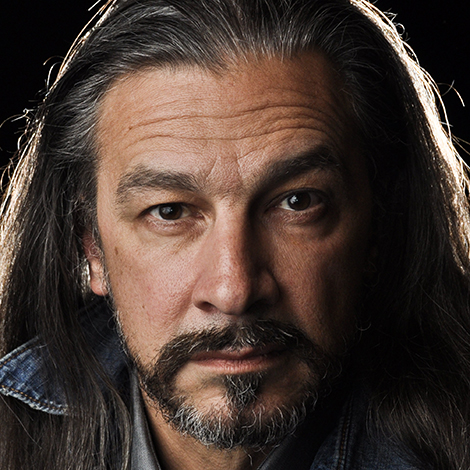
Greer Grimsley
Scarpia

Greer Grimsley
Scarpia
American bass-baritone Greer Grimsley made his San Diego Opera debut as Telramund in Lohengrin in 2000, returned for Pizarro in Fidelio in 2003, The High Priest of Dagon in Samson and Delilah in 2007, Scarpia in Tosca in 2009 and 2016, Méphistophélès in Faust in 2010, as Jochanaan in Salome in 2012, and was last heard locally as The Pirate King in 2017’s The Pirates of Penzance. He made his Metropolitan Opera debut as Captain Balstrode in Peter Grimes and has returned as Escamillo in Carmen, Jochanaan, Scarpia, Telramund, and Amfortas in Parsifal. Recent engagements include Wotan in Seattle Opera’s Ring Cycle, Don Pizarro in Fidelio with Opera Company of Philadelphia, Portland Opera and the Portuguese National Opera, Kurwenal in Tristan und Isolde at Lyric Opera of Chicago, John the Baptist with the companies of Santa Fe, Vancouver and San Francisco and Scarpia with L’Opera de Montreal, Opera Colorado and Lyric Opera of Kansas City. Other roles include The Flying Dutchman in Lithuania and Seattle Opera, the title role of Macbeth with Vancouver Opera, Amonasro in Aida with Portland Opera, Méphistophélès in Faust with New Orleans Opera, and the title role of Sweeney Todd with Vancouver Opera. A frequent singer in Europe, Grimsley has performed leading roles at Deutsche Oper Berlin, Teatro Comunale di Bologna, Royal Danish Opera, Prague National Theatre, Aarhus-Den Jyske Opera in Denmark, the Scottish Opera and the Stadttheater Basel in Switzerland, among others.

Marcelo Puente
Cavaradossi

Marcelo Puente
Cavaradossi
San Diego Opera debut. Born in Argentina, Marcelo Puente has gained widespread recognition as an important lirico-spinto tenor in theaters including the Royal Opera House, Opéra national de Paris, Deutsche Oper Berlin, Staatsoper Stuttgart, Teatro alla Scala, Teatro Colon, Opera Australia, Teatro Real in Madrid, Staatsoper Hamburg, Théâtre Royal de la Monnaie, Semperoper Dresden, Canadian Opera Company, the State Opera in Prague, and several others. Puente sprang to international attention in 2017 when he debuted at the Royal Opera House as Pinkerton in Madama Butterfly opposite Ermonela Jaho and conducted by Sir Antonio Pappano. This production was also released on DVD. Other debuts followed in rapid succession: at Staatsoper Hamburg and Théâtre Royal de la Monnaie as Pinkerton, as Cavaradossi in Tosca at the Canadian Opera Company, as Don José with Opera Australia, and in Japan in concert performances of Carmen under Charles Dutoit with the NHK Orchestra.
Puente sang Paolo in Francesca da Rimini at Opéra du Rhin in Strasbourg in 2018 and subsequently starred in the same role for his debut at La Scala. He also added the role of Don Álvaro in La Forza del Destino to his repertoire in a new production at Opernhaus Zürich, as well as at Semperoper Dresden. The artist also sang his first Calaf in Turandot for his debut at the Vancouver Opera. In 2019, Puente made two other significant debuts: at the Opéra national de Paris as Cavaradossi and at the Washington National Opera in the title role of Faust. He returned to Dresden as Don José in Carmen and made his debut at Cologne Opera in La Forza del Destino. He also sang Cavaradossi at Staatsoper Hamburg and Pinkerton in El Escorial, Spain. Puente began the 2019/20 season with his debut at the Teatro Real in Madrid in the title role of Don Carlos, after which he reprised the role for his debut at the Greek National Opera in Athens. He also recently sang his first Pollione in a new production of Norma at Staatsoper Hamburg. Other engagements have included Don José at the Deutsche Oper Berlin, Manrico in Il Trovatore with Opera Toulon, and the title role in a new production of Verdi’s Don Carlos at the State Opera Prague. Puente has also starred as Riccardo in Un ballo in maschera at the Teatro Colon in Buenos Aires.
Last season, Puente made his debut at the Opéra de Marseille as Cavaradossi in Tosca. Puente began the 2021/22 season with his return to Dresden as Pollione in Norma, after which he appeared as Pinkerton for his debut at the Opéra de Monte-Carlo and at the Palau de les Arts Reina Sofia in Valencia. He debuted the title role of Andrea Chenier this season at the Greek National Opera and returns to Marseille in the title role of Don Carlos. In the 2022/23 season he will return to the Teatro Colon in Buenos Aires and to the Hamburg State Opera in Tosca. He will appear as Don Jose in Montreal. Roles in preparation for the future include Turridu in Cavalleria Rusticana, Dick Johnson in La Fanciulla del West, Enzo in La Gioconda, and Radames in Aida.
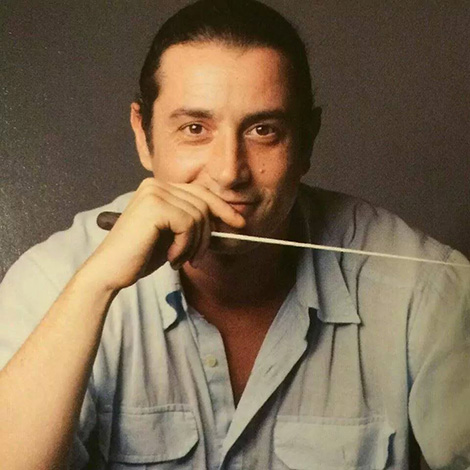
Valerio Galli
Conductor

Valerio Galli
Conductor
Italian conductor Valerio Galli made his Company debut conducting Turandot in 2018. He was named “Best Italian Conductor Under 40” by La Stampa newspaper. His recent engagements include Carmen at Michigan Opera Theatre, La bohème at Teatro San Carlo and Teatro Regio, Don Carloand Fedora at Teatro Carlo Felice, Pagliacci in Verona, Adriana Lecouvreurfor Macedonian Opera and Ballet in Skopje, Zanetto and Cavalleria rusticana for Teatro Goldoni, La rondine for Fresno Grand Opera, Madama Butterfly for Teatro Muicipale in Picenza and Teatro Carlo Felice, Turandot with Theater Zhuhai Huafa in China, Michigan Opera Theater, and Teatro Verdi, La forza del destino at Teatro Verdi, Tosca at Teatro Coccia in Novara, Teatro Sociale in Trento, Teatro Verdi, and Teatro Sociale in Rovigo, Il Campanello and Gianni Schicchi at Teatro Carlo Felice, Rigoletto at Teatro Comunale, Carmen at Teatro Coccia, and La traviata at Teatro Sociale in Mantua. He is well known for his concert work with performances at the XXII Kecskeméti Tavaszi Festival in Hungary, the International House of Music in Moscow, Teatro Goldoni in Livorno, Teatro Pavarotti in Modena, Teatro Carlo Felice in Genoa, the New Year’s Day Concerts at Teatro del Giglio in Lucca and Teatro Verdi in Pisa, symphonic concerts with the San Marino Symphony Orchestra and inaugurated the 57th Santander Festival with soloists Eva Mei and Giacomo Prestia.

Alan E. Hicks
Stage Director

Alan E. Hicks
Stage Director
Following several years as a professional singer and teaching stints at the internationally acclaimed Actors Studio Drama School and American Academy of Dramatic Arts, Alan E. Hicks turned his attention to stage direction. He has directed productions for organizations throughout the United States and in Europe including Minnesota Opera, Palm Beach Opera, Saint Paul Chamber Orchestra, San Diego Opera, Tulsa Opera, Opera Santa Barbara, Franco-American Vocal Academy in Salzburg, and Music Academy International in Italy. Alan has also served on the directing and production staffs of Central City Opera, Chautauqua Opera, Florida Grand Opera, Lyric Opera of Chicago, Michigan Opera Theatre, New York City Opera, Seattle Opera, and Tulsa Opera. In 2013, he was appointed Director of the Emerging Artist Program at Green Mountain Opera Festival, a position he held until the company’s closing in 2015. He is San Diego Opera’s Resident Director and serves as Assistant Director on San Diego Opera’s productions. His directing engagements for the Company include Tosca, Aida, and All Is Calm: The Christmas Truce of 1914 and he co-conceived When I See Your Face Again: Unmasking the music of notorious pandemics. Notable work includes Ariadne auf Naxos for Minnesota Opera, The Elixir of Love for Opera Santa Barbara, La Clemenza di Tito for Music Academy International, Albert Herring at the University of Missouri-Kansas City, L’Amico Fritz and L’Italiana in Algeri for the Moores Opera Center at the University of Houston, Die Zauberflöte for Shenandoah Conservatory, and The Turn of the Screw for the Miami Music Festival. In addition to his work alongside such venerable operatic performers as Renée Fleming, Stephanie Blythe, Silvia McNair, Frederica von Stade, Carl Tanner, and Thomas Hampson as well as rising stars Michelle Bradley, Erin Morley, Kate Lindsey, Hannah Hipp, Brian Jagde, Amber Wagner, and Nadine Sierra, Alan has assisted renowned opera directors Michael Cavanagh, Chris Alexander, Linda Brovsky, Jay Lesenger, Peter Kazaras, and Broadway veterans Susan Stroman and Sam Buntrock. Of Costa Rican-American descent, Alan holds degrees in Music Education, Vocal Performance, and Opera Directing from Mississippi State University, Rice University, and The University of Texas at Austin (respectively). Alan is a member of Actors’ Equity Association (AEA) and the American Guild of Musical Artists (AGMA).
Synopsis in English
Rome, June 14, 1800
The Battle of Marengo was fought this day in Piedmont, Italy, between 28,000 French forces led by Napoleon Bonaparte and 30,000 Austrian forces led by General Melas. Although Napoleon appeared defeated in the morning, the French overcame the Austrians in a surprise attack at night, driving them out of Italy.
Act I – The Church of Sant’ Andrea della Valle
Cesare Angelotti, an escaping political prisoner, searches for a key to open a chapel and hides there as the church’s Sacristan enters, grumbling about his work. The artist Mario Cavaradossi arrives to continue work on his portrait of Mary Magdalene, inspired by a young woman he has seen the day before in prayer. He compares the raven beauty of his love, the singer Floria Tosca, with that of the blonde Magdalene. Angelotti comes out of hiding, and as he explains his escape from the Castel Sant’Angelo, Tosca calls to Cavaradossi, who gives Angelotti food and hurries him back into the chapel. Tosca is certain she has heard Cavaradossi with another woman and jealously questions him. They set a rendezvous at his villa that evening. As the artist returns to work, Tosca suddenly recognizes the Magdalene as the Marchesa Attavanti, whom she deems must be Cavaradossi’s lover. He assures Tosca that he loves only her, and she departs. Cavaradossi realizes that Angelotti is Attavanti’s brother, and she has hidden a disguise of women’s clothing in the chapel. Cavaradossi sends Angelotti off to hide deep in the well of his garden, but upon hearing a canon signaling a prisoner has escaped from the Castel Sant’Angelo, the two flee together to the villa, mistakenly dropping a fan, part of the disguise. The Sacristan announces a celebration around the defeat of Napoleon, and in the throes of jubilation, the Baron Scarpia, Chief of Police, arrives in search of Angelotti. The Sacristan mumbles that the empty food basket in the chapel must mean that Angelotti had indeed hidden there. When Tosca returns to tell Cavaradossi that she can’t meet that evening due to her part in the evening’s celebration around Napoleon’s defeat, Scarpia shows her the fan decorated with the Attavanti crest, and muses that surely Attavanti and Cavaradossi are lovers. Tosca tearfully vows vengeance and leaves for the villa where she is sure to find the two lovers. Scarpia sends his men to follow her and ruminates on the joy of two possible conquests that evening – capturing his political enemy and taking Tosca for himself.
Act II – The Farnese Palace
Scarpia anticipates his evening’s victories. Sciarrone, an agent of Scarpia, is sent to fetch Tosca following her performance. Spoletta arrives with news that although Angelotti has not been found, he has arrested Cavaradossi, whom Scarpia interrogates. Tosca arrives just as Cavaradossi is taken off to an adjoining room to be tortured. Although she disavows any knowledge of where Angelotti might be, she is finally so overcome by Cavaradossi’s screams that she reveals the hiding place. When he realizes what Tosca has revealed, Cavaradossi is outraged. Sciarrone rushes in to announce that Napoleon has in fact won the Battle of Marengo, a defeat for Scarpia but joyful news for Cavaradossi. He is taken off to the Castel Sant’Angelo to be hanged at sunrise. Scarpia suggests Tosca yield herself to him in exchange for her lover’s life. Fighting off his advances, she protests her fate to God, having dedicated her life to art and love. Spoletta tells Scarpia that the gallows is built, forcing Tosca to give in to Scarpia or see her lover killed. Scarpia changes his orders from death by hanging to a mock execution by firing squad, after which Cavaradossi will be freed. Scarpia writes a safe-conduct out of Rome for the lovers. As he rushes victoriously toward Tosca, she kills him. Wrenching the safe conduct document from his fingers, she slips from the room.
Act III – The Roof of Castel Sant’ Angelo
Awaiting execution, Cavaradossi bribes the jailer to take a farewell note to Tosca. Writing it, he is overcome with memories of an evening of love, and gives way to despair. Tosca rushes in to tell him of Scarpia’s death by her hands. She explains the mock execution and exhorts him to fake his death well. The lovers revel in their upcoming triumph. The firing squad carries out its orders and fire upon Cavaradossi, who falls convincingly. Tosca begs him to remain silent and still until the squad has departed, then urges him to rise and escape. When he fails to move, she discovers that Scarpia’s treachery has reached from beyond the grave: the bullets were real. Calling out that she and Scarpia will meet before God, Tosca leaps to her death.
Sinopsis en Español
Roma, junio 14, 1800
La batalla de Marengo se peleó este día en Piedmont, Italia, entre 28,000 fuerzas francesas comandadas por Napoleón Bonaparte y 30,000 fuerzas austriacas comandadas por el General Melas. Aunque parecía que Napoleón había sido vencido en la mañana, los franceses vencieron a los austriacos en un ataque sorpresivo por la noche, expulsándolos de Italia.
Primer Acto – La Iglesia de Santa Andrea de la Valle
Cesare Angelotti, un prisionero político que se escapo, busca la llave para abrir la capilla y se esconde ahí mientras el Sacristán de la iglesia entra quejándose de su trabajo. El artista Mario Cavaradossi llega a continuar trabajando en el retrato de María Magdalena, inspirado por una joven mujer que ha visto rezando el día anterior. El compara la extraordinaria belleza de su amada, la cantante Floria Tosca, con la de rubia Magdalena. Angelotti sale de su escondite, y mientras le explica como escapo del Castel Sant’ Angelo, Tosca llega a visitar a Cavaradossi, quien le da comida a Angelotti y lo apura a que regrese a la capilla. Tosca está segura que ha escuchado a Cavaradossi con otra mujer y lo cuestiona celosamente. Se ponen de acuerdo para verse en su residencia esa noche. En tanto el artista regresa a trabajar, Tosca reconoce en la Magdalena a la Marquesa Attavanti, a quien ella se imagina que debe ser la amante de Cavaradossi. El le asegura que solamente la ama a ella y ella se va. Cavaradossi se da cuenta que Angelotti es el hermano de Attavanti, y ella ha escondido un disfraz de mujer en la capilla. Cavaradossi envía a Angelotti a que se esconda en lo profundo del pozo de su jardín, pero al escuchar el sonido del cañon anunciando que un prisionero se ha escapado del Castel Sant’ Angelo, huyen juntos a la residencia y por error se les cae un abanico el cual es parte del disfraz. El Sacristán anuncia una celebración por la derrota de Napoleón y en medio del jubilo el Baron Scarpia, Jefe de la Policía, llega buscando a Angelotti. El Sacristán balbucea que la canasta vacía en la capilla debe significar que Angelotti había ciertamente estado ahí. Cuando Tosca regresa para decirle a Cavaradossi que no lo puede ver esa noche debido a su participación esa misma noche en la celebración de la derrota de Napoleón, Scarpia le enseña el abanico decorado con el escudo de armas de la familia Attavanti y considera que seguramente Cavaradossi y Attavanti son amantes. Tosca llorando jura vengarse y sale rumbo a la residencia donde está segura de encontrar a los dos amantes. Scarpia envía a sus hombres a seguirla y piensa en el gozo de dos posibles conquistas esa noche – capturar a su enemigo político y quedarse con Tosca.
Segundo Acto – El Palacio Farnese
Scarpia tiene previsto sus victorias de esa noche, a Sciarrone, un agente de Scarpia lo envía a que traiga a Tosca después de que termine su presentación. Spoletta llega con noticias de que a pesar de que Angelotti no ha sido encontrado, ha arrestado a Cavaradossi, a quien interroga Scarpia. Tosca llega justo cuando a Cavaradossi lo están llevando a un cuarto contiguo para ser torturado. A pesar de que ella niega tener algún conocimiento acerca del paradero de Angelotti, finalmente se siente tan abrumada por los gritos de Cavaradossi qué les revela el lugar donde se esconde. Cuando se da cuenta lo qué Tosca ha revelado, Cavaradossi se pone furioso. Sciarrone se apresura a anunciar que Napoleon ha ganada en realidad la Batalla de Marengo, una derrota para Scarpia pero agradables noticias para Cavaradossi. Lo llevan al Castel Sant’Angelo para ser ahorcado al amanecer. Scarpia le sugiere a Tosca que ceda a sus deseos a cambio de la vida de su amante. Rechazando sus avances, ella le reprocha a Dios su suerte, después de que ha dedicado su vida al arte y al amor. Spoletta le dice a Scarpia que el patíbulo está edificado, forzando a Tosca a que ceda a los avances de Scarpia o que observe como matan a su amante. Scarpia cambia sus órdenes y pide no ejecutarlo en la ahorca sino llevar a cabo una ejecución ficticia frente a un pelotón de fusilamiento, después de la cual Cavaradossi será liberado. Scarpia redacta un documento de salvoconducto para que los dos amantes salgan de Roma. Mientras se lanza victorioso hacia Tosca, ella lo mata. Arrancando el salvoconducto de sus dedos, se escabulle fuera del cuarto.
Tercer Acto – El Tejado del Caste Sant’ Angelo
Esperando su ejecución, Cavaradossi soborna al guardián para que le lleve una carta de despedida a Tosca. Mientras la escribe, se ve abatido por recuerdos de una tarde de amor, y lo domina la desesperación. Tosca llega corriendo para decirle que ha matado a Scarpia. Le explica el simulacro de la ejecución y lo exhorta a que finja su muerte lo mejor que pueda. Los amantes disfrutan su inminente triunfo. El pelotón de fusilamiento lleva a cabo sus órdenes y dispara contra Cavaradossi, quien cae convincentemente. Tosca le ruega que permanezca callado y quieto hasta que el pelotón se haya retirado, entonces le pide que se levante y escape. Cuando no logra moverse, ella descubre que la traición de Scarpia ha llegado más allá de la tumba: las balas eran reales. Exclamando que ella y Scarpia se volverán a encontrar frente a Dios. Tosca salta y muere.
Corporate Sponsors









